Install the app
How to install the app on iOS
Follow along with the video below to see how to install our site as a web app on your home screen.
Note: This feature may not be available in some browsers.
You are using an out of date browser. It may not display this or other websites correctly.
You should upgrade or use an alternative browser.
You should upgrade or use an alternative browser.
UAV / UCAV / LAR (robotit) Uutiset ja jutut
- Viestiketjun aloittaja Raveni
- Aloitus PVM
Niin se lukuhan oli 170. Paljon mahtanee olla Tornadojen miehitys?
Varmaan nämäkin voi laskea yhtä monella eri tapaa kuin lentotunnin kulut.
jäi mietityttämään sen verran että pengoin lehtihyllyä. Air international 4/2010 s34.Saattaisi johtua siitä, että nuo lennokit pysyvät ilmassa huomattavasti pitempään ja ei ole mitään syytä olla vaihtamatta pilottia aina välillä, kun se nyt vain on niin vaivatonta.
Ralli englanti suomennos. 24/7 Reaper CAP ottaa 185 henkeä, sisältää sateliitit, sensorit, lentäminen, huolto ja aseistaminen. Vastaavasti squadron tornadoja pyörii 108 hengen voimin.
Samassa myös mainittiin että Reapperit ovat toimineet sangen rauhallisessa ympäristössä missä niitä vastaan ei ole juurikaan hyökätty. Ja jos näin käy ne joudutaan korvaamaan jollain liikehtintäkykyisemmällä.
Viimeksi muokattu:
Sarek1
Ylipäällikkö
Länsinaapurilla ei tule olemaan varaa UCAVin kehittämiseen. Ainoastaan jollain tiedustelulastilla. Euroopassa ylipäänsä joutuu kokoamaan voimat jos haluaa jatkaa Neuronista todelliseen UCAViin. Dassault ja BAe ehkä voivat yksin, muut tuskin.
Ruotsalaiset olivat jo mukana nEUROnin kehittämisessä. Heillä oli sitä aiemmin omat SHARC ja FILUR -kehitelmät ja kokeilut parviapureiksi, mutta lyöttäytyivät sitten ranskalaisten remmiin. Ellei kansallisylpeys tms. triviaali seikka tule eteen, eurooppalainen UCAV, jos sellaista on tullakseen, on monikansallinen ja monen valmistajan hanke.
Ranska testaa Neuronia Charles de Gaulle -lentotukialuksen kanssa. Koska sitä ei suunniteltu laukaisun/laskuun kykeneväksi on kyseessä vain sensorien/viestinnän yhteispelin toiminnan harjoittelusta.
Tämä on jonkinlainen indikaatio haluista kehittää naval U(C)AV.
Yhdysvalloissahan UCLASS etenee ainoastaan tankkauskoneen muodossa, mutta nimenomaan lentotukialus-UAV.
http://www.janes.com/article/60482/france-begins-naval-testing-of-neuron-ucav
http://www.defense-aerospace.com/ar...trator-begins-naval-flight-test-campaign.html
Tämä on jonkinlainen indikaatio haluista kehittää naval U(C)AV.
Yhdysvalloissahan UCLASS etenee ainoastaan tankkauskoneen muodossa, mutta nimenomaan lentotukialus-UAV.
http://www.janes.com/article/60482/france-begins-naval-testing-of-neuron-ucav
http://www.defense-aerospace.com/ar...trator-begins-naval-flight-test-campaign.html
The LOw-Cost Unmanned aerial vehicle Swarming Technology (LOCUST) is a prototype tube-launched UAV. The LOCUST program will make possible the launch of multiple swarming UAVs to autonomously overwhelm and adversary.
John Hilly
Respected Leader
Hamas yrittää salakuljettaa mini-lennokeita postipaketteina Gazaan
Terrorist organizations attempting to smuggle weapons via postal service
Recently, Border Crossings Authority agents foiled many attempts to smuggle weapons and multicopter drones via the postal service into Gaza. The goods were seized and investigations have been launched in order to locate those involved in the smuggling attempts.

Mitä tässä mahtaa olla?
http://www.jerusalemonline.com/news...ine&utm_campaign=MiddayNewsletter+-+Recurring
Terrorist organizations attempting to smuggle weapons via postal service
Recently, Border Crossings Authority agents foiled many attempts to smuggle weapons and multicopter drones via the postal service into Gaza. The goods were seized and investigations have been launched in order to locate those involved in the smuggling attempts.

Mitä tässä mahtaa olla?
In recent weeks, the Border Crossings Authority thwarted dozens of attempts to smuggle multicopter drones and weapon via the postal service into Gaza.
At Erez Crossing, dozens of attempts to smuggle weapon supplies and materials, by disguising them as innocent mail packages, were foiled. The goods were discovered by Border Crossings Authority and Shin Bet agents while they were inspecting the packages.
In recent years, Gaza-based terrorist organizations have not widely used the postal service for smuggling items. However, according to assessments, the terror organizations are currently attempting to smuggle the goods through the postal service because Israeli security forces have intensified their operations to thwart smuggling attempts on other fronts.
Today (Monday), Border Crossings Authority agents at Erez Crossing discovered 10 multicopter drone engines in packages.
http://www.jerusalemonline.com/news...ine&utm_campaign=MiddayNewsletter+-+Recurring
Mitä tässä mahtaa olla?
Näyttää kyro stabilisaattorilta kameralle taikka muulle vastaavalle sensorille.
Hyvä artikkeli autonomiasta ja niistä moraalisista kysymyksistä asevoimien suhteen.
http://spectrum.ieee.org/robotics/m...nt-robot-warriors-to-decide-who-lives-or-diesThe three countries’ approaches to robotic weapons, introducing increasing automation while emphasizing a continuing role for humans, suggest a major challenge to the banning of fully autonomous weapons: A ban on fully autonomous weapons would not necessarily apply to weapons that are nearly autonomous. So militaries could conceivably develop robotic weapons that have a human in the loop, with the option of enabling full autonomy at a moment’s notice in software. “It’s going to be hard to put an arms-control agreement in place for robotics,” concludes Wendell Wallach, an expert on ethics and technology at Yale University. “The difference between an autonomous weapons system and nonautonomous may be just a difference of a line of code,” he said at a recent conference.
Harvardin yliopiston hyönteisdrone. Voitte varmaan arvata mihin tätä käytetään.
http://hackaday.com/2016/06/05/robot-moth-is-learning-to-fly-like-a-real-moth/Harvard University has had the flying robot insect market covered for a long time. However, their robot bee, while cool, was starting to bum them out. They wanted to put the battery and brain on the robocritter and have it fly around without a tether. Technology just wasn’t moving fast enough for them, so they’ve picked a different bug, this time a moth.
The Wyss Institute for Biologically Inspired Engineering at Harvard University is known for its Flying Winged Micro Air Vehicles or FWMAV. Which is a pretty good example of what happens when you let engineers name things. This FWMAV, weighs in at a hefty 3grams and has a 16mm wingspan. It also has propulsion, sensors, communication, brains, and power on board. Pretty impressive, the heaviest item is the motor!
The moth can produce 4g of thrust, and they’ve shown it capable of staying aloft once launched with a small catapult. Since they’ve proven that it can at least fly, the next steps are to figure out the dynamics of moth-based flight. Right now it stays pointed in the right direction with a very tiny tail fin like on an airplane. Real moths manage this feat with independent wing control, which the robot doesn’t have yet.
It will be a while before a we’ll see robot moths bumping into our computer monitors a night, stealing our passwords, but it’s a really cool exercise in robot miniaturization.
Naapuri kehittelee uudenlaista dronea
http://www.spacedaily.com/reports/Russia_working_on_high_altitude_drone_999.htmlIn the next two years, Samara University researchers and their colleagues from Samara, Moscow, the Moscow Region and St. Petersburg will develop an aircraft that will also act as a space satellite. This atmospheric pseudo-satellite will monitor the environment, carry out remote-sensing projects, conduct meteorological observations and provide cell-phone communications in metropolises as a hovering antenna.
Due to a relatively low speed of 70 kph, the atmospheric pseudo-satellite will basically hover above any designated area. It will accommodate smaller, lighter and less costly satellite-type equipment functioning at lower altitudes. This atmospheric pseudo-satellite will be able to change its trajectory and reach any designated region.
It will take off from and land at airfields and will cost less to operate than space satellites.
Scientists from the Aviation Technology Institute are currently assessing the new aircraft's basic specifications, its performance and its overall layout.
"The altitude is the main issue. These aircraft shouldn't fly at the same altitude as commercial airliners because a slow and fuel-efficient plane should maintain inflight stability. Twenty kilometers is an optimal altitude because there are no winds there, and because it makes the plane stable," says Valery Komarov, Head of Samara University's Aircraft Design and Structure Faculty.
The new Russian atmospheric pseudo-satellite will feature battery-operated and solar-powered electric motors, and its solar panels will convert solar energy into power. The plane's structure will mostly consist of composite materials.
Its design and engineering solutions, especially those for determining the maximum efficiency of solar batteries at different altitudes, will first be tested on various drones that have already been developed by the university. The Crimean Peninsula, which has the required latitude and solar-activity levels, will serve as a test site for the new aircraft.
The creation of a strategic new drone is a serious challenge for the Samara National Research University's research team. The project has pulled in four university institutes focusing on aviation technology, rocket and space technology, electronics and instrument engineering, engines and power plants, as well as various specialized faculties and science and engineering centers, and the joint Russian-Slovenian laboratory, Sophisticated Adaptive Aerospace Systems, headed by Professor Georgy Rzhevsky from the United Kingdom.
"The creation of a science cluster for this technology will allow the university to train specialized experts in aerospace sciences by conducting breakthrough research," Valery Yelenev, Director of the Aviation Technology Institute, notes.
The development of atmospheric pseudo-satellite concepts and main science-and-engineering solutions will allow Samara University to become a global leader in terms of designing and manufacturing high-altitude drones capable of long-term self-sustaining flight.
Jenkit toisaalta väsäilee parvisoftan ja autonomian parissa
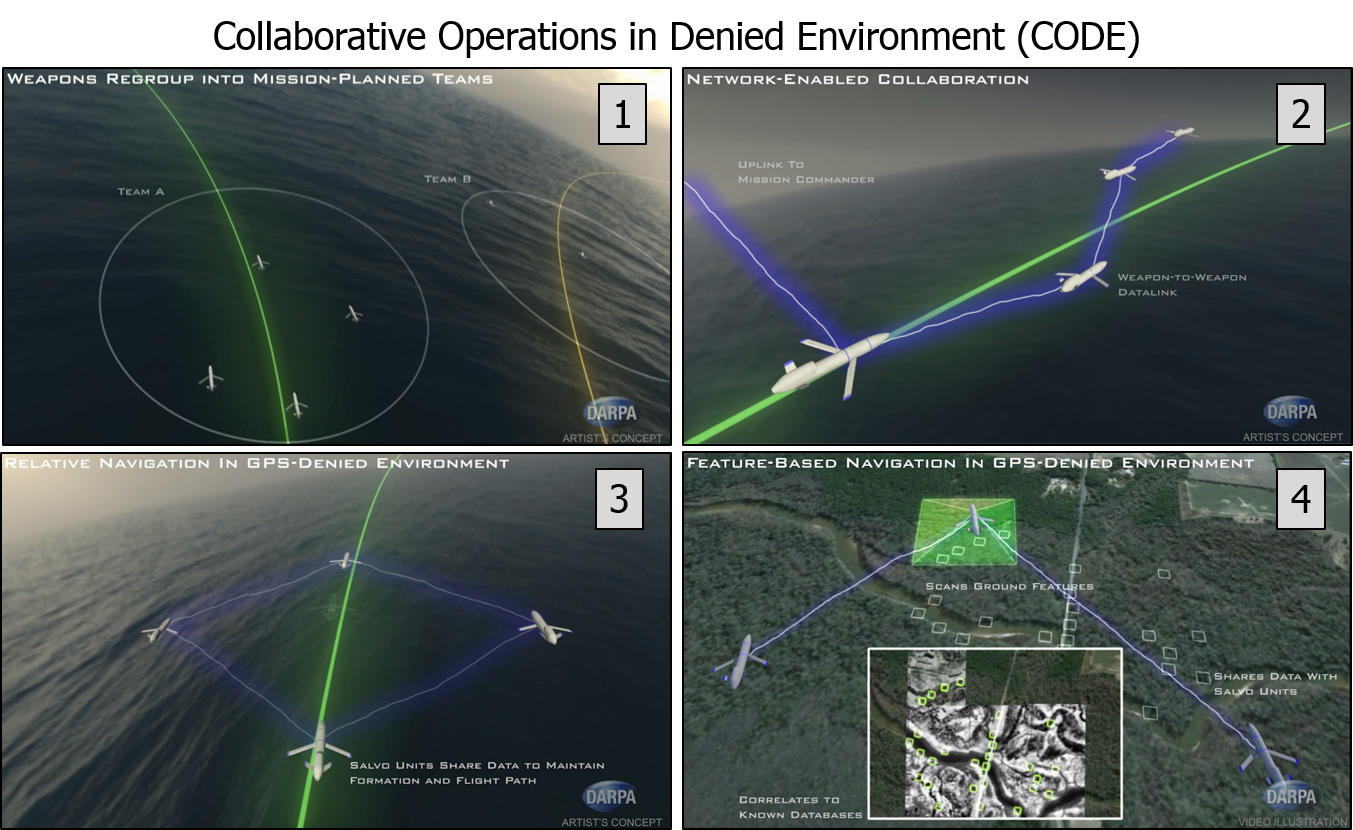

http://www.spacedaily.com/reports/C...d_Collaborative_Unmanned_Air_Systems_999.htmlDARPA's Collaborative Operations in Denied Environment (CODE) program seeks to help the U.S. military's unmanned aircraft systems (UASs) conduct dynamic, long-distance engagements of highly mobile ground and maritime targets in denied or contested electromagnetic airspace, all while reducing required communication bandwidth and cognitive burden on human supervisors. In an important step toward that goal, DARPA recently awarded Phase 2 system integration contracts for CODE to Lockheed Martin Corporation (Orlando, Fla.) and the Raytheon Company (Tucson, Ariz.).
CODE's main objective is to develop and demonstrate the value of collaborative autonomy, in which UASs could perform sophisticated tasks both individually and in teams under the supervision of a single human mission commander. CODE-equipped UASs would perform their mission by sharing data, negotiating assignments, and synchronizing actions and communications among team members and with the commander.
CODE's modular open software architecture on board the UASs would enable multiple CODE-equipped unmanned aircraft to navigate to their destinations and find, track, identify, and engage targets under established rules of engagement. The UASs could also recruit other CODE-equipped UASs from nearby friendly forces to augment their own capabilities and adapt to dynamic situations such as attrition of friendly forces or the emergence of unanticipated threats.

https://www.wired.com/2016/06/tiny-engine-one-step-closer-powering-drones-electric-cars/A Wankel engine replaces reciprocating pistons with one or more triangular rotors that follow an elliptical orbit within a peanut-shaped chamber. Combustion occurs in the spaces between the triangular and circular shapes. The design, used most successfully by Mazda, allows for an engine that can run at higher speeds and produce more power than a similarly sized conventional engine. It’s also light and compact.
The reason you don’t see more of them, though, is Wankels get lousy fuel economy, burn loads of oil and emit piles of CO2. They also have a history of poor reliability. Even Mazda gave up on the tech—for now, at least—in 2012 when it quit building the RX-8.
LiquidPiston, which has a $1 million deal with Darpa, addresses these problems by turning engine inside out. Instead of a triangle in a peanut, the X Mini uses a peanut-shaped rotor in a triangular chamber. Combustion occurs at fixed points, making it easier to lubricate without burning oil, the company says. The design can be used in engines large and small, and company brass claim it can produce up to 1,000 horsepower.
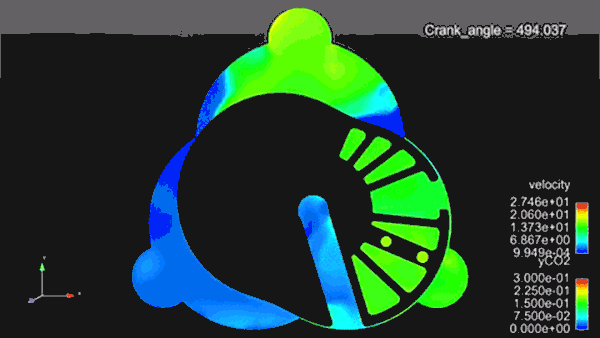
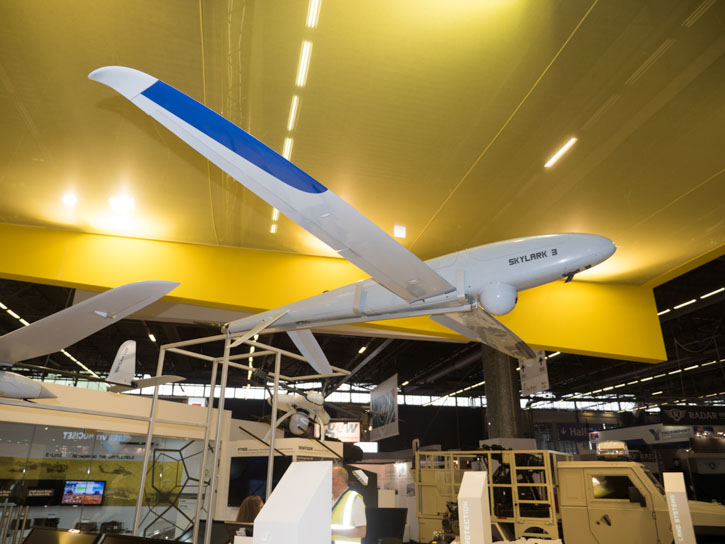
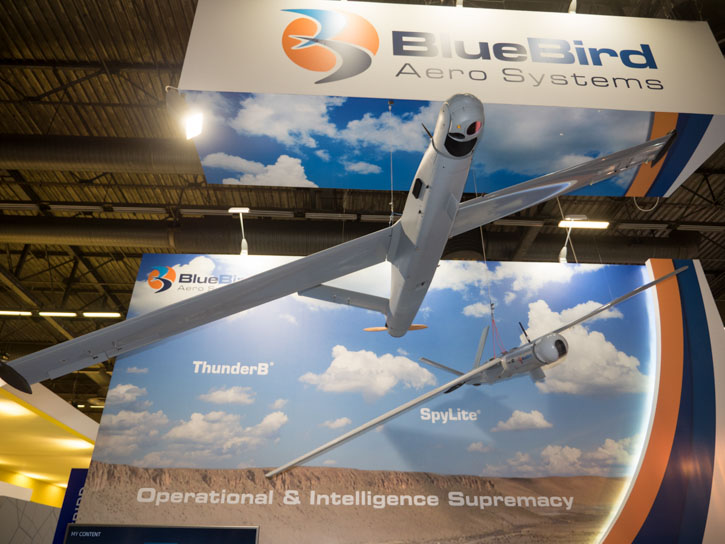
ThunderB and Spylite are two of BlueBird’s Aero Systems’ latest mini- tactical drones. Photo: Noam Eshel, Defense-Update
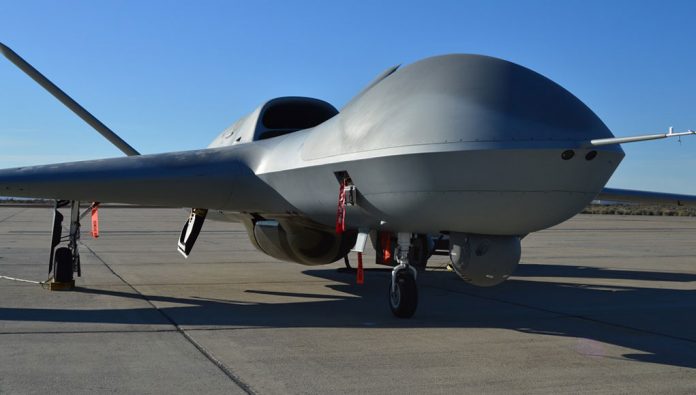
http://defense-update.com/20160620_avenger_with_ms117.htmlGeneral Atomics Aeronautical Systems Inc. (GA-ASI) will begin flight testing of an Improved Avenger in October 2016. This enhanced version of the semi-stealthy drone will enhance the Avenger’s capabilities on long endurance intelligence gathering missions carrying the new MS-177 Electro-optical/Infrared (EO/IR) sensor recently demonstrated in flight. With an increased wingspan of 23 meters (76 feet), the improved Avenger will extend the aircraft’s endurance from 15 hours to 20 hours, thus increasing the utility of this strategic reconnaissance collector over a longer period and extended range.
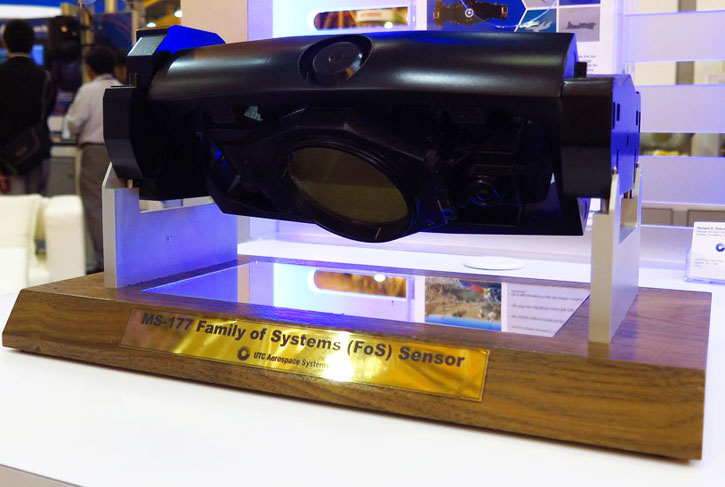
According to UTAS, the MS-177 is more technically advanced than the SYERS 2 flying on U-2 aircraft and also is significantly more affordable to manufacture. The sensor is a 7-band multispectral system that can be upgraded to a 10-band system to enhance target detection for maritime applications. The MS-177 has a wider field of view than its SYERS-2 predecessor. With a 90° roll and 25° pitch, it covers 37,000km² (14,300 miles²) per hour of flight.
Rajajääkäri
Ylipäällikkö
Huomattavaa kehitystä, sekä myös hieman pelottavan näköinen tämä uusin Boston Dynamics haukku.
O helvattu! pakko alkaa uskoa robottien kehittyvän todellisiksi ihmisen apureiksi.




